
Pablo Ruiz Picasso was a Spanish painter, sculptor, printmaker, ceramicist, and theatre designer who spent most of his adult life in France. One of the most influential artists of the 20th century, he is known for co-founding the Cubist movement, the invention of constructed sculpture, the co-invention of collage, and for the wide variety of styles that he helped develop and explore. Among his most famous works are the proto-Cubist Les Demoiselles d'Avignon (1907) and the anti-war painting Guernica (1937), a dramatic portrayal of the bombing of Guernica by German and Italian air forces during the Spanish Civil War.

Salvador Domingo Felipe Jacinto Dalí i Domènech, Marquess of Dalí of Púbol, known as Salvador Dalí, was a Spanish surrealist artist renowned for his technical skill, precise draftsmanship, and the striking and bizarre images in his work.
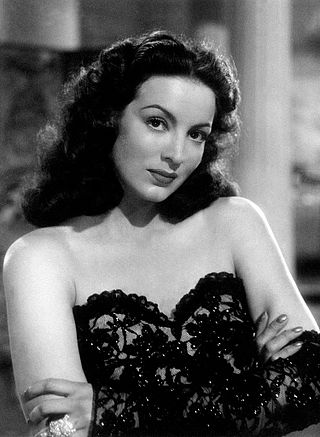
María de los Ángeles Félix Güereña was a Mexican actress and singer. Along with Pedro Armendáriz and Dolores del Río, she was one of the most successful figures of Latin American cinema in the 1940s and 1950s. Considered one of the most beautiful actresses of the Golden Age of Mexican cinema, her strong personality and taste for finesse garnered her the title of diva early in her career. She was known as La Doña, a name derived from her character in Doña Bárbara (1943), and María Bonita, thanks to the anthem composed exclusively for her as a wedding gift by Félix's second husband, Agustín Lara. Her acting career consists of 47 films made in Mexico, Spain, France, Italy and Argentina.
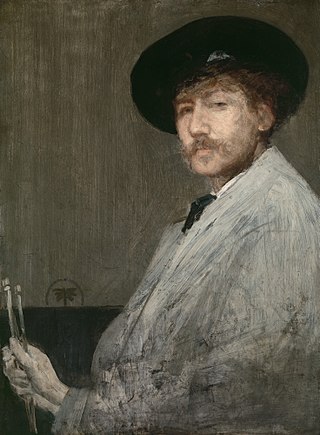
James Abbott McNeill Whistler was an American painter in oils and watercolor, and printmaker, active during the American Gilded Age and based primarily in the United Kingdom. He eschewed sentimentality and moral allusion in painting and was a leading proponent of the credo "art for art's sake".

Lust for Life is a 1956 American biographical film about the life of the Dutch painter Vincent van Gogh, based on the 1934 novel of the same title by Irving Stone which was adapted for the screen by Norman Corwin.

Cujo is a 1981 horror novel by American writer Stephen King about a rabid Saint Bernard. The novel won the British Fantasy Award in 1982 and was made into a film in 1983.

Tad Martin is a fictional character from the American daytime drama, All My Children. Tad was played by three actors, according to the age of the character: Matthew Anton, John E. Dunn, and Michael E. Knight. Knight has portrayed the role on and off from 1983 until the series finale in 2011. Tad represents the good on the show, often butting heads with "villains" like Adam Chandler. He is perhaps the best male friend to Erica Kane. His relationship with Dixie Cooney made them a favorite of fans, reaching supercouple status. Under secrecy, Knight returned for the first-season finale of Prospect Park's version of All My Children on September 2, 2013.

Brooke Allison English is a fictional character on the television soap opera All My Children. Originated by Elissa Leeds on March 10, 1976, she was portrayed by Julia Barr from June 1976 to June 1981 and from November 1982 to December 20, 2006. Harriet Hall played the role from June 1981 through March 1982. Barr made a special appearance as Brooke on January 5, 2010, as part of the series' 40th anniversary, and returned on February 23, 2010, for a two-month stint until April 23, 2010. She later returned for the show's final week on ABC on September 16, 2011. She returned as Brooke on the Prospect Park's continuation of All My Children.

Ophelia is an 1851–52 painting by British artist Sir John Everett Millais in the collection of Tate Britain, London. It depicts Ophelia, a character from William Shakespeare's play Hamlet, singing before she drowns in a river.
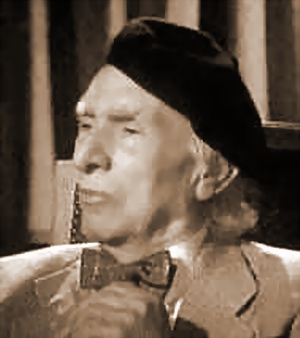
John Alton, born Johann Jacob Altmann, in Sopron, Kingdom of Hungary, was an American cinematographer of Hungarian-German origin. Alton photographed some of the most famous films noir of the classic period and won an Academy Award for the cinematography of An American in Paris (1951), becoming the first Hungarian-born person to do so in the cinematography category.

Marie-Louise O'Murphy, also variously called Mademoiselle de Morphy, La Belle Morphise, Louise Morfi or Marie-Louise Morphy de Boisfailly, was the youngest lesser mistress of King Louis XV of France, and the model for François Boucher's painting The Blonde Odalisque, also known as The Resting Girl.

Percival Everett is an American writer and Distinguished Professor of English at the University of Southern California.

Mont Sainte-Victoire is a series of oil paintings by French artist Paul Cézanne, depicting the French mountain Montagne Sainte-Victoire.

The Private Affairs of Bel Ami is a 1947 American drama film directed by Albert Lewin. The film stars George Sanders as a ruthless cad who uses women to rise in Parisian society, co-starring Angela Lansbury and Ann Dvorak. It is based on the 1885 Guy de Maupassant novel Bel Ami. The film had a 1946 premiere in Paris, Texas. The score is by Darius Milhaud.

Malibu is a 1983 American made-for-television drama film based on a novel by William Murray. Featuring Kim Novak, Susan Dey, Troy Donahue and James Coburn, the miniseries involves a young couple from Milwaukee, who move into the fabled, high-society Malibu beach community, and become involved with the lives of the various people living in the community.

Still life paintings by Vincent van Gogh (Paris) is the subject of many drawings, sketches and paintings by Vincent van Gogh in 1886 and 1887 after he moved to Montmartre in Paris from the Netherlands. While in Paris, Van Gogh transformed the subjects, color and techniques that he used in creating still life paintings.
Picasso: Magic, Sex, & Death (2001) is a three-episode Channel 4 film documentary series on Pablo Picasso (1881–1973) presented by the artist's friend and biographer John Richardson, and directed by Christopher Bruce or British art critic Waldemar Januszczak, who was also the series director. On-screen contributors include Picasso descendants such as Paloma Picasso, Bernard Ruiz-Picasso, Diana Widmaier-Picasso, Maya Picasso, and Claude Picasso; along with authorities such as Mary Ann Caws, Billy Klüver, Gérard Régnier, James Lord, Bernard Minoret, Robert Rosenblum, Linda Gasman, Marilyn McCully, David Gilmore and Gertje Utley; one former mistress ; and one flirtation.
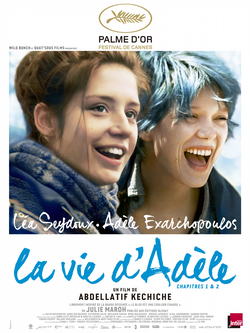
Blue Is the Warmest Colour is a 2013 romantic drama film co-written, co-produced, and directed by Abdellatif Kechiche and starring Léa Seydoux and Adèle Exarchopoulos. The film follows Adèle (Exarchopoulos), a French teenager, who discovers desire and freedom when Emma (Seydoux), an aspiring painter, enters her life. It depicts their relationship from Adèle's high school years to her early adult life and career as a schoolteacher. The film's premise is based on the 2010 graphic novel of the same name by Jul Maroh.
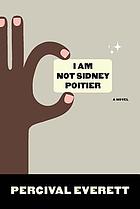
I Am Not Sidney Poitier (2009) is a novel by American writer Percival Everett. Originally published by Graywolf Press, in 2020, it was published by Influx Press in the UK. It explores the tumultuous life of a character named Not Sidney Poitier as the social hierarchy scrambles to balance his skin color with his wealth.

A Chemist Lifting with Extreme Precaution the Cuticle of a Grand Piano is a 1936 oil painting by artist Salvador Dalí. The painting is an example of Dalí's distinctive, avant-garde brand of surrealism as well as a curious example of Dalí's mysterious relationship with Judaism.



















